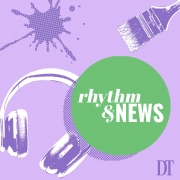.flex_cell.av-av_cell_one_fourth-07d30e11a6a5b37cb8a80b2906d41ea3{
vertical-align:top;
}
Armenian students commemorate their history
The event began the second annual Armenian Heritage Month celebration at USC.
#top .hr.hr-invisible.av-av_hr-3cdc9664f29087702913853352eac422{
height:10px;
}
By SEAN CAMPBELL
#top .hr.hr-invisible.av-av_hr-3cdc9664f29087702913853352eac422{
height:10px;
}
.avia-image-container.av-m8zm5q5e-72470153fdbec08b98e90f46ebe332ac img.avia_image{
box-shadow:none;
}
.avia-image-container.av-m8zm5q5e-72470153fdbec08b98e90f46ebe332ac .av-image-caption-overlay-center{
color:#ffffff;
}
Dancers from the Exclusive Dance Studio performed multiple traditional Armenian dances while wearing traditional clothing. (Sean Campbell / Daily Trojan)
.flex_cell.av-av_cell_one_fourth-07d30e11a6a5b37cb8a80b2906d41ea3{
vertical-align:top;
}
.flex_cell.av-av_cell_one_fourth-07d30e11a6a5b37cb8a80b2906d41ea3{
vertical-align:top;
}
Nairi Khemichian, a sophomore majoring in health and the human sciences, said whenever she sees a shourtchbar — a traditional Armenian group dance where individuals form a circle — she joins in. Khemichian said the dance is “like second nature” to her because she grew up doing shourtchbar and other traditional Armenian dances with her family.
When the performers from Exclusive Dance Studio began to pull audience members into the dance at the second annual Armenian Heritage Month Opening Ceremony on Tuesday at Hahn Plaza, Khemichian was one of the first to join in. By the end of the dance, around 20 of the roughly 200 attendees joined the dancers, who were dressed in traditional attire, surrounded by a display of Armenian rugs.
Last year, USC held its first recognized celebration of Armenian Heritage Month — a collaboration between the University, the Armenian Students’ Association and the Institute of Armenian Studies.
Daily headlines, sent straight to your inbox.
Subscribe to our newsletter to keep up with the latest at and around USC.
ASA president Mané Berikyan said the goal of this year’s festivities was to establish Armenian Heritage Month as an annual event at USC and to expand the scale and number of Armenian-centered events. Other events include a tech conference on April 5, an undergraduate resource symposium on April 11 and a vigil remembering the Armenian Genocide on April 24.
Berikyan said turnout was “incredible” and that the event was an “important” way to make Armenian students feel welcome on campus.
“We’re grateful to USC and the USC community for being supportive and for showing up. It means a lot to us, and especially as a community that has historically been unheard and invisible,” said Berikyan, also a program assistant at the Institute of Armenian Studies and a senior majoring in international relations as well as Russian. “We’ll keep fighting for our visibility, and we hope that one day the fight will have to be a little less on our side, and we will be more welcome [and] more of a University-driven initiative in future years.”
Maral Tavitian, managing director at the Institute of Armenian Studies, said the theme for this year’s Armenian Heritage Month programming is Armenian excellence across various fields.
“The concept of Armenian excellence does not only apply institutionally, but also individually,” Tavitian said. “This beautiful event is a product of their commitment to ensuring that Armenian voices are recognized and celebrated as part of the vibrant tapestry that makes USC student bodies so special.”
Khemichian said the community dances performed at the event were a metaphor for the Armenian people as a whole, whom she described as “very welcoming,” and said the event was an important way to spread awareness for Armenian culture.
“We’re not a very big or widely known ethnicity,” Khemichian said. “I see a lot of non-Armenians here today, and I think that’s really wonderful because we get to show other people how awesome our culture is and how nice and welcoming our people are.”
In an address during the event, former Los Angeles City Council President Paul Krekorian said April used to exclusively serve as a commemoration of the Armenian Genocide, but said he is “grateful” for the broadening “scope of remembrance” created by the rebrand into Armenian Heritage Month.
“While it’s important that we continue to demand justice for the genocide and remember its lessons, it’s also important that we remember that that is not all that defines us as Armenians,” said Krekorian, currently the executive director of the Office of Major Events at the City of L.A. “We’ve spent our modern history primarily as a diasporan people, fighting to preserve our national identity and culture and faith against all odds … Miraculously, this tiny nation of people has survived and flourished.”
Krekorian spoke about Armenian history in the United States — which he said dates back to the Jamestown settlement — and said many have “found refuge” and “enriched the fabric” of California, and specifically L.A., against “all odds and obstacles.”
“In each one of those successes, the Armenian people have declared victory over barbarism and bigotry,” Krekorian said. “They’ve proven that the perpetrators of the genocide failed and, instead of being buried, they have risen.”
Shaurya Aggarwal, a senior majoring in international relations, said he had not heard about the event until he walked by and heard the music and saw the “beautiful” traditional outfits of the dancers. Aggarwal said he did not know Armenians had “such a long history” in the U.S. before attending the event, and learned about the culture through attending.
Angelica Mirzaian, a senior majoring in business administration, said the event was important in order to raise awareness among students who didn’t know much about her culture.
“It’s good to be open-minded and just learn about other people,” Mirzaian said. “There’s just a lot of close-minded ideas and ideology online and I think it’s better to experience [culture] firsthand.”
Before performers took the stage, Krekorian concluded his address by saying Armenian culture will prevail despite “imminent threat[s]” to its people, which he said included conflicts with Azerbaijan and Turkey as well as loss of culture through assimilation.
“As long as there’s a musician who masters the songs of Komitas, as long as there’s one Armenian American who registers to vote … as long as there are students here at the University of Southern California who are making the effort to study and remember this culture and its history and its modern significance, we as a culture will not perish from this earth,” Krekorian said.
#top .hr.hr-invisible.av-av_hr-82f5be0ae0af6a64fe3091010b237709{
height:20px;
}
.flex_cell.av-av_cell_one_fourth-158c56ad4987fbee32a30a1d6c306202{
vertical-align:top;
}
The post Armenian students commemorate their history appeared first on Daily Trojan.









